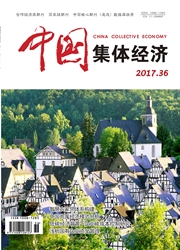

 中文摘要:
中文摘要:
城市群是在个体城市相互影响的作用下产生的,这个影响过程可以通过四部门的宏观经济模型得以表示。借助边际消费倾向、边际输出倾向等诸多因素对K值的计算,阐述两个城市框架下个体城市间相互作用的影响过程。城市群向腹域的扩展是依托核心城市的中心性强度变化进行的,随着核心城市的中心性强度减弱,城市群在腹地内的扩展势力也逐渐减弱。技术进步、交通条件的改善、要素成本降低、产业结构升级等可通过影响地租曲线的向右移动导致城市外围空间扩展速度差异,进而影响城市群的形成与发展。
 英文摘要:
英文摘要:
Urban agglomeration is developed on the basis of reciprocal interaction among individual cities, and the process can be illustrated by the model of four-sector macro-economy. We elaborate the influencing process of individual urban interaction between two cities with the help of K model, of which, K is calculated through many key economic indexes, such as Marginal Propensity to Consume (MPC) and Marginal Propensity to Export (MPE). The expanding process of urban agglomeration to the entire area relies on urban center intension (CI). With the gradual reduction of CI from the central area to the margin, urban capability expanding to entire area is reduced gradually in the same direction. Many economic factors play their role in this process, these factors including the improvement of technology, the condition of transportation, the reduction of factor cost and the upgrading of industrial construction, which can be used to influence the formation and development of urban agglomeration by impacting the rent curve on the coordinate plane to the rightward and lead to a different expanding velocity in different urban areas.
 同期刊论文项目
同期刊论文项目
 同项目期刊论文
同项目期刊论文
 期刊信息
期刊信息
